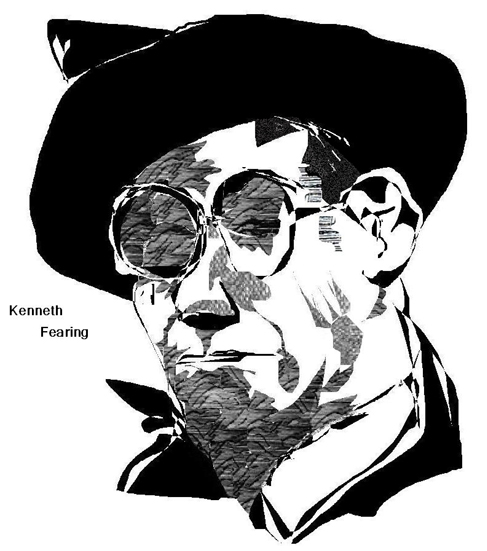
|
Excerpt from
Love 20 cents the First Quarter Mile
All right. I may have lied to you and about you, and made a
Infiltrating the public discourse that serves to legitimate "oppressive institutions," Fearing anticipated poststructuralist analyses of how ideologies interpellate subjects by fostering imaginary investments in textual power. His verse parted company with the less cosmopolitan poetics of proletarian agit-prop, focusing instead on advanced capitalism's relentless promotion of goods, services, and new consumer satisfactions. Paralleling the Frankfurt theorists' contemporaneous analyses of capitalism's Kulturindustrie (but in more populist and less elitist aesthetic registers), his poetry inhabited the dominant representations of consumer society. His textual praxis was lodged at once within and against the advertising and media imagery of a burgeoning pop culture. Thus, Fearing was not so much a propagandist of Communist humanism, although there is some of that in his work, but, more radically, a debunker of the commodity form as it pervades modem society. Around 1926, Fearing experienced a conversion that he described as sudden — the rumble of a New York City El train intruded on his contemplation of a sonnet about Caesar's centurions, and he realized he had to begin writing about the here and now, in the language of the here and now. His poems, almost overnight, went from describing "the perfumed couch of June" to something "bought at the drugstore, very cheap; and later pawned" ... |